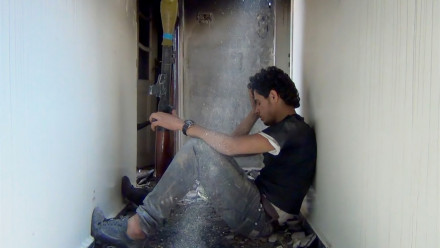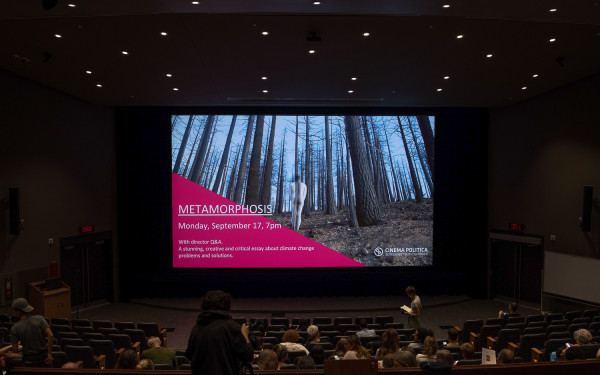Review: Return to Homs
When we think of loss, do we think of an entire city? As Westerners, most of us will never know what such loss really is—to see our past, present and future crumble before our very eyes.
It is in this bleak yet resonating tone, aboard a car travelling desolate war-stricken roads in Western Syria, that director Talal Derki narrates the opening scene of Return to Homs, which was screened by Concordia’s Cinema Politica on Monday, March 3rd.
Through Derki’s candid lens, we are taken inside the lives of a group of men who illustrate the beating heart of Syria, and help us feel its open wounds.
At a time when media was not allowed into the country, Derki’s three years of filming in Homs between 2011 and 2013 is a gargantuan achievement in capturing everyday life for Syrian rebels. Return to Homs paints an intimate portrait of the revolution before the violence even erupted in the way most of the world associates with the Syrian crisis.
Citizens of Homs peacefully protested President Bashar al-Assad’s regime in typical Middle Eastern camaraderie. Large crowds singing and chanting at the top of their lungs in unison, arm in arm, clapping rhythmically to the words of their protest.
Amidst Syrian flags and heightened spirits, Abdul “Basset” Saroot stands out as the 19-year-old fervent ringleader with the voice of an angel. It is through this former soccer goalkeeper, along with activist and fellow cameraman Oussama, that Derki takes us into the heart of the Syrian Rebellion.
What’s most striking is how close the viewer gets to the action and to the emotional response of the Basset’s guerrilla group.
The trust that these men gave to Derki during filming, and vice versa, is remarkable. He followed and documented everything: from lively protests, to civilians on the run from government grenades, to tanks annihilating rebel barricades.
The footage is not for the faint of heart, as children and civilians are given emergency operations in the back of shops by rebel doctors. From amputations to coronary catheters, these DIY operations are rampant.
Hospitals in Homs were not to be trusted, according to Basset, who got his ankle ripped apart by a machine gun as his guerilla group attempted to advance further into Khalediya.
The United Nations makes an appearance, but with only six representatives to canvas the entire city of Homs in less than a day, their presence only highlights the rest of the world’s blatant inaction.
Derki captures the paralyzing silence of a once-bustling city that now basks in a stale and seemingly post-apocalyptic state.
Unable to travel on open streets for fear of being shot down by snipers, Basset and his group travel through makeshift passages they made in deserted buildings. With hammers, they strike down walls of abandoned apartments in order to create stealthy passageways.
Like rats eating away at the corners of doors, this is the only way the rebels can travel safely. They make holes in the outer walls so their machine guns have openings to shoot from, with only a secondary wall for protection against government bullets fired the other way.
Eventually, they dig underground tunnels, which take over three weeks to make, in order to avoid being shelled by Syrian forces. It goes without saying that such footage has seldom, if at all, made it to major media outlets.
The barren landscape of destroyed Homs is punctuated by the raw drilling sound of bullets and languishing birdsong.
There is no soundtrack, but the a capella songs sung by Basset fill the bare barracks of their hideouts as he cries out to the world that sits watching, silent as a grave while Syria bleeds dry.
While complex in its own right, the Syrian civil war is undoubtedly fueled by the blood of the people, not their aspirations. Derki captures this stark reality and the total decimation of a city’s energetic pulse.
Return to Homs is a powerful, moving film that is beautifully shot and narrated, features Basset’s unforgettable voice, and stimulates serious reflection on our global role in the Syrian crisis.


_600_832_s.png)


_600_375_90_s_c1.jpeg)

